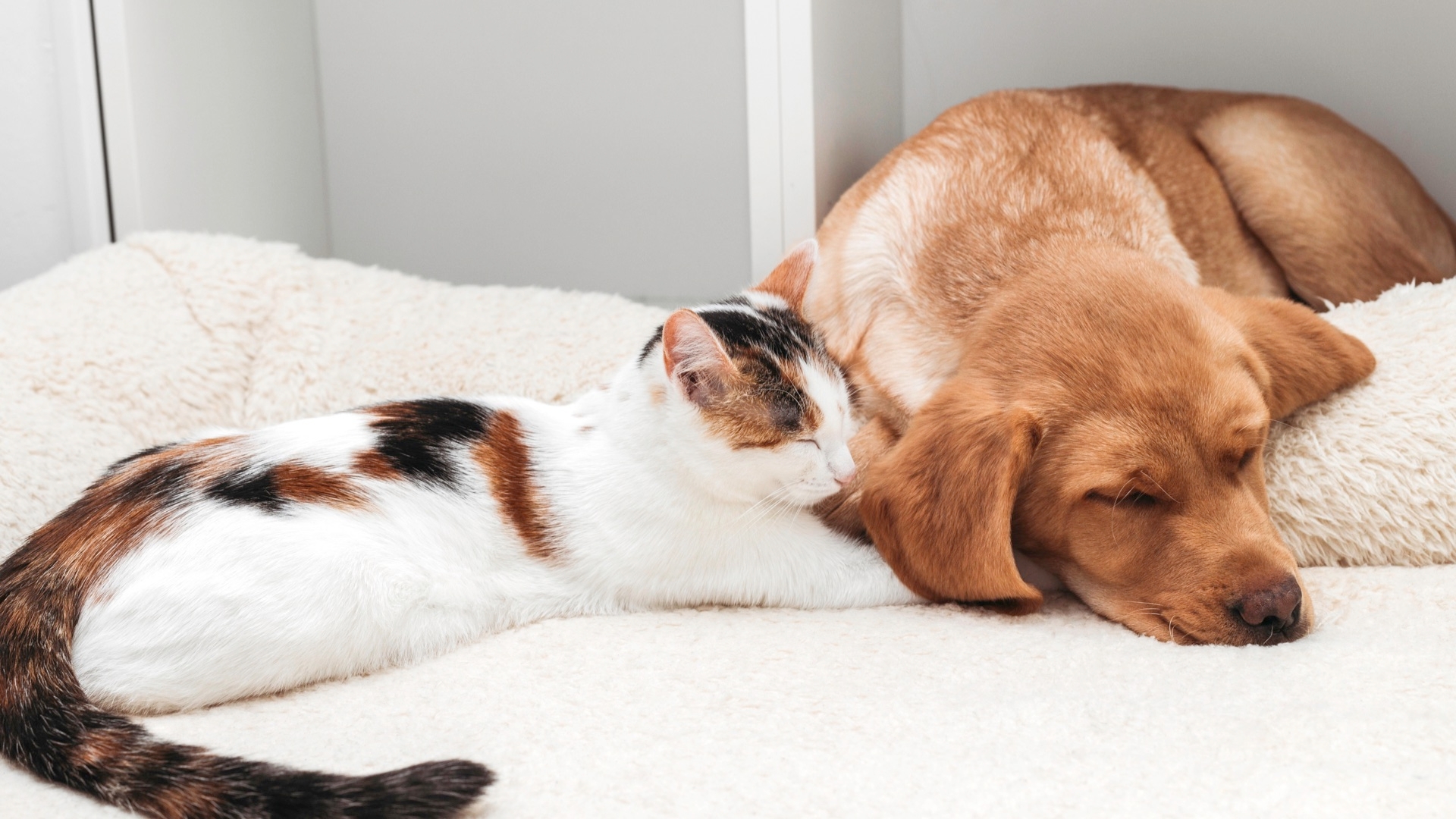Controlling Fleas On Dogs And Cats:
Summary:
Cat fleas are dark reddish-brown in color. the females are 2 - 2.5 mm long and the males slightly smaller. The life cycle of the flea begins when the female lays eggs which hatch into larvae. Each larva eventually spins a cocoon where it transforms into a pupa and finally emerges as an adult flea.
The cat flea, Ctenocephalides felis (Bouche), is one of the most common flea infesting dogs, cats, and opossums and is considered a significant public health pest. Besides being the intermediate host of the common tapeworm of dogs and cats, it will also readily feed on the blood of humans, producing irritation and allergic dermatitis. Most significantly it can transmit the causal agent of flea-borne typhus.
During their life cycle, fleas undergo complete metamorphosis with four developmental stages: egg, larva, pupa, and adult. Under ideal conditions which can occur during the summer months, this life cycle can be completed in as little as 12 days.
Adult female fleas begin laying eggs one or two days after taking their first blood meal and can produce an average of 25 eggs per day for up to three weeks. Eggs are laid on the host, but readily fall out of the fur and are distributed in the environment. Relative humidity has a significant effect upon the survival of flea eggs. In dry conditions with 50% or lower relative humidity, eggs become too dry and the developing larvae die. When considering the survival of eggs, the micro-habitat in which the eggs are deposited is of prime importance.
When the eggs hatch the larvae are quite active, crawling about and feeding on organic debris and adult flea feces, a necessary component of their diet. Research on the cat flea indicates that only larvae which feed on the fecal material of adult fleas successfully complete their life cycle. Moisture levels within the micro-habitat of the larvae are also critical for survival, with relative humidity levels below 50% producing mortality.
The larvae feed continuously, and after completing their development migrate to undisturbed areas and spin their cocoons. The cocoon is composed of silk and when newly formed is moist and sticky. It quickly becomes coated with particles of debris from the surrounding area. This covering serves to camouflage the cocoon as well as protect the pupa developing within it from chemicals and harsh conditions.
Fleas begin to emerge from their cocoons in as little as three days with peak emergence in eight to nine days. Shortly after emerging, adults actively seek a blood meal. Under environmental conditions encountered in southern California during the summer months, most cat fleas die in two to five days if no host is found. Understanding the biology and behavior of the cat flea is an important factor in controlling this pest. Cat fleas are dark reddish-brown in color. the females are 2 - 2.5 mm long and the males slightly smaller. The life cycle of the flea begins when the female lays eggs which hatch into larvae. Each larva eventually spins a cocoon where it transforms into a pupa and finally emerges as an adult flea.
Once on a host, cat fleas prefer to become permanent residents. During feeding, cat fleas will defecate large quantities of partially digested blood. This fecal material dries rapidly into hardened pellets, most of which eventually fall into the environment to serve as essential food for developing larvae.
Successful flea control includes not only the treatment of infested pets, but also the thorough treatment of all areas where flea breeding is occurring. Any areas where the pet spends a considerable amount of time will produce "hot spots" of infestation that require special attention. It is important to remember flea larvae will develop only in protected micro-habitats where there is a source of dried adult fecal pellets.
When pets spend time indoors, physical control in the home plays a vital role during flea abatement activities. Since flea eggs and fecal pellets fall from the fur when the pet scratches itself or shakes its body, washing the pet's blankets and bedding material, and vacuuming habitual resting and sleeping areas helps eliminate eggs, fecal pellets, larvae and pupae.
If the pet is permitted on furniture, these items must be thoroughly vacuumed including both sides of the seat cushions and any folds or pockets formed by fabric. If the pet sleeps beside heavy furniture such as recliners or beds, the floor beneath these items must be vacuumed.
Sites frequently visited must also be considered as potential flea breeding areas: the location of food and water dishes, and the litter box are important. Cats often use overhead resting sites such as the tops of kitchen cabinets, hutches, and entertainment centers, and these sites must be included in control activities. Fleas can also develop between the planks of hardwood floors or beneath baseboards. After vacuuming all potential "hot spots", empty the contents of the vacuum cleaner into a disposable bag, seal it, and dispose of the bag in the trash. Pesticides labeled for the control of fleas indoors can be used as a follow-up to physical control. Always read the label carefully and follow all directions.
Outdoor areas where pets spend time must also be included in the control program. Kennels, runs, dog houses, areas used for resting or elimination, and patrolled fence lines must be treated with pesticides labeled for outdoor use. Carefully apply the material as directed on the label. Applications performed with pressurized spray cans provide the most consistent and thorough applications. Where heavy vegetation covers the ground, make certain the pesticide penetrates the plant growth and is applied to the soil surface.
Pets must also be included in the control program and should be treated on the same day the home and yard are treated. Products such as flea shampoos and sprays can provide temporary control, but spot treatments applied to specific areas of the pet's body as well as feed-through treatments supplied by veterinarians can be highly successful in breaking the reproductive cycle by preventing flea eggs from developing into adults fleas.
Opossums, as well as feral (wild) and free-roaming cats can be a source of fleas that may be involved in the transmission of flea-borne typhus. When these animals are permitted access to yards and harbor in dense vegetation or in crawl spaces beneath structures, flea infestations can develop. Yards should be kept clear of heavy undergrowth, structures maintained in good repair, and accumulated debris eliminated to reduce harborage. Pesticides are seldom successful in managing flea infestations when these animals have continued access to a yard.


